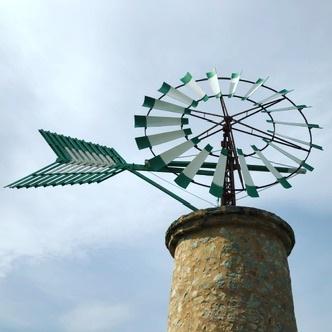How has the strategic positioning of the Balearic Sea influenced Mallorca’s architectural styles across different historical periods?
Similar Topics
balearic sea influence
mallorca architecture
talayotic period
roman architectural principles
moorish design
catalan gothic style
coastal fortifications
mediterranean architectural styles
The strategic position of the Balearic Sea has played a significant role in shaping Mallorca’s architectural styles throughout its history. Situated at the crossroads of maritime routes connecting the western Mediterranean with the territories of southern Europe and North Africa, Mallorca served as a key point of contact for various civilizations. This constant flow of traders, conquerors, and settlers introduced diverse cultural influences that are reflected in the island's built environment. From the ancient Talayotic period, where dry stone constructions and defensive towers known as "talayots" were erected, to later eras, the designs responded to both functional needs and the stylistic preferences of dominant powers.
During Roman times, Mallorca became integrated into the empire’s extensive trade network, and Roman architectural principles such as the use of arches, aqueducts, and villas as country estates were introduced. The island’s main settlements flourished due to their proximity to the sea, fostering economic growth and encouraging the development of urban centers with classical design elements. Following the Roman period, Mallorca’s position continued to make it a coveted possession for successive rulers, including the Moors and later the Catalan-Aragonese Crown. Moorish influence is evident in the island’s use of intricate geometric patterns, water features, and inward-looking courtyards, designed to create cool, shaded spaces adapted to the Mediterranean climate.
The Catalan conquest in the 13th century further transformed Mallorca’s architectural landscape, incorporating Gothic styles that can still be admired in structures such as the Palma Cathedral. The island’s coastal fortifications, including watchtowers and bastions, were developed to guard against pirate attacks and rival naval forces ensuring control of important sea routes. This mix of military and religious architecture illustrates how the island’s geography demanded both defense and spiritual affirmation under changing sovereignties. In the modern period, Mallorca continues to blend traditional elements with contemporary styles, while its Mediterranean setting remains a crucial influence, inspiring the use of natural light, open spaces, and seamless integration with the surrounding sea and landscape.
Thus, Mallorca’s architectural styles across different historical periods beautifully narrate the story of a land shaped by its strategic maritime position. Every era’s distinctive contributions highlight how the island acted as a cultural and commercial hub in the Balearic Sea, its buildings bearing witness to centuries of interaction and adaptation. Travelers discover not just a Mediterranean paradise but a living architectural archive reflecting the balanced interplay of geography, history, and artistic expression.
During Roman times, Mallorca became integrated into the empire’s extensive trade network, and Roman architectural principles such as the use of arches, aqueducts, and villas as country estates were introduced. The island’s main settlements flourished due to their proximity to the sea, fostering economic growth and encouraging the development of urban centers with classical design elements. Following the Roman period, Mallorca’s position continued to make it a coveted possession for successive rulers, including the Moors and later the Catalan-Aragonese Crown. Moorish influence is evident in the island’s use of intricate geometric patterns, water features, and inward-looking courtyards, designed to create cool, shaded spaces adapted to the Mediterranean climate.
The Catalan conquest in the 13th century further transformed Mallorca’s architectural landscape, incorporating Gothic styles that can still be admired in structures such as the Palma Cathedral. The island’s coastal fortifications, including watchtowers and bastions, were developed to guard against pirate attacks and rival naval forces ensuring control of important sea routes. This mix of military and religious architecture illustrates how the island’s geography demanded both defense and spiritual affirmation under changing sovereignties. In the modern period, Mallorca continues to blend traditional elements with contemporary styles, while its Mediterranean setting remains a crucial influence, inspiring the use of natural light, open spaces, and seamless integration with the surrounding sea and landscape.
Thus, Mallorca’s architectural styles across different historical periods beautifully narrate the story of a land shaped by its strategic maritime position. Every era’s distinctive contributions highlight how the island acted as a cultural and commercial hub in the Balearic Sea, its buildings bearing witness to centuries of interaction and adaptation. Travelers discover not just a Mediterranean paradise but a living architectural archive reflecting the balanced interplay of geography, history, and artistic expression.
🧩 Related Questions
Related Question
What measures are in place to ensure that the money collected from the eco-tax is used transparently?
Related Question
What precautions should tourists take when driving on narrow coastal roads during the peak season in Mallorca?
Related Question
Why was Mallorca’s geographic location significant for military strategy during historical conflicts?


